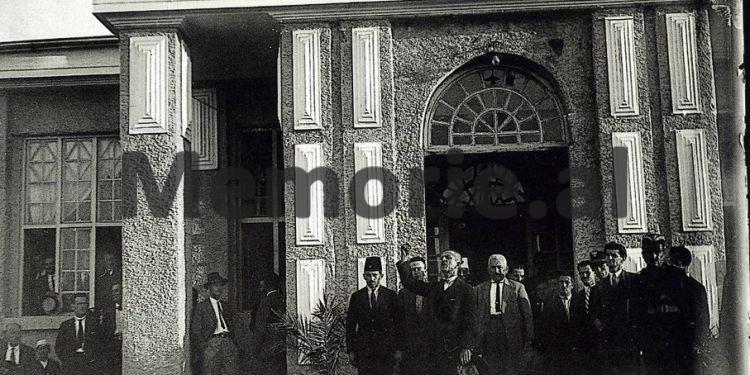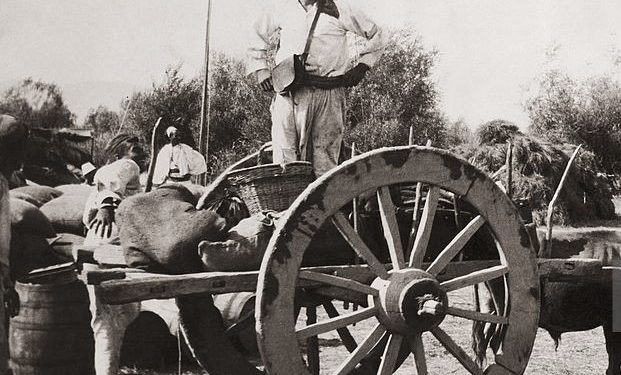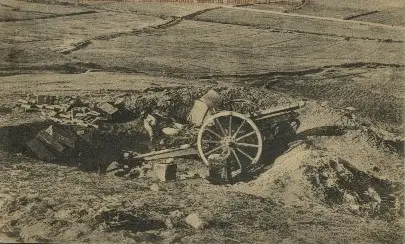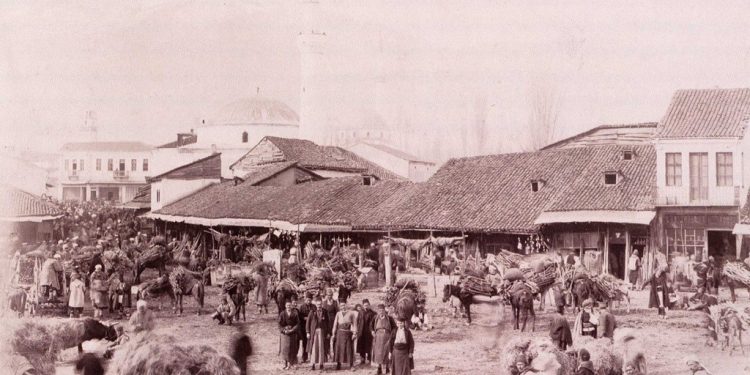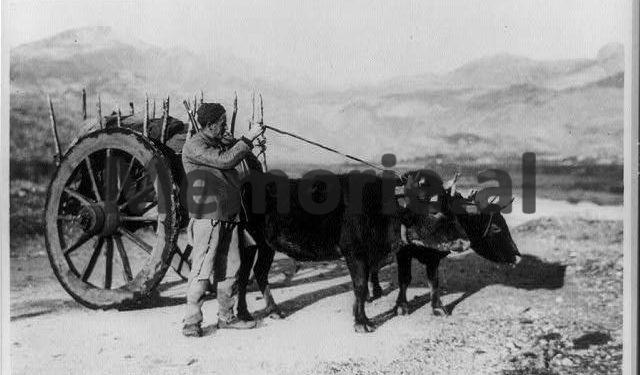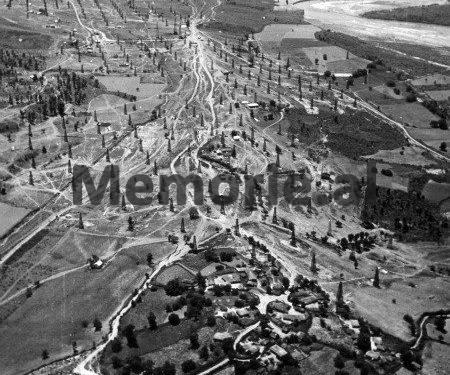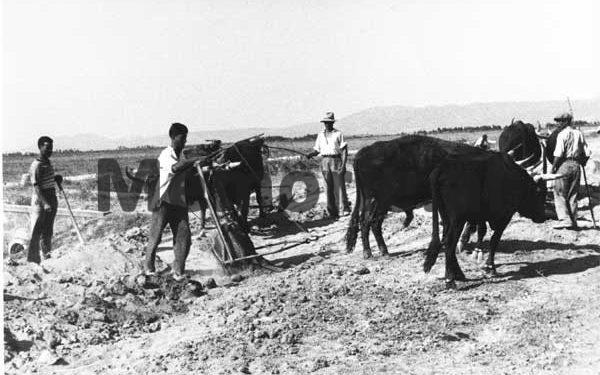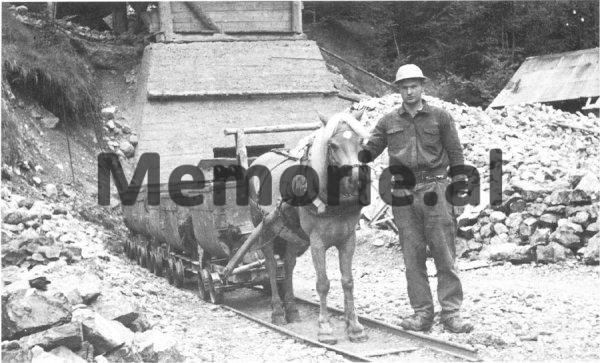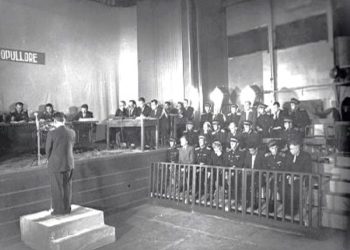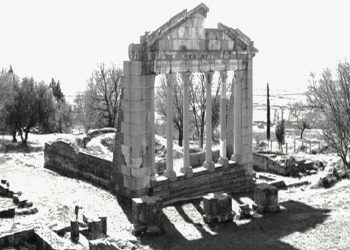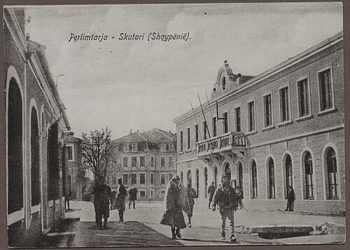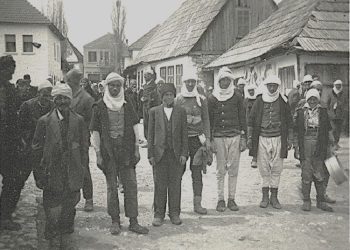Dashnor Kaloçi
Memorie.al publishes several articles of economic character selected by the press of the Zog Monarchy which deals with the economic developments of Albania at that time, as a result of the improvement of the banking system legislation and the consolidation and expansion of the banking sector, as by The National Bank of Albania, headed by the Italian co-director, Gradudenzi, the newly established Agricultural Bank, to the ‘Banco di Napoli a Albania’ and the Export Bank of Belgrade. All these are made known by the newspaper “Drita” of the period May – June 1937, where are reflected a series of articles that refer to the statistics issued and published by the National Bank of Albania at that time, where detailed balances of exchanges of goods with neighboring countries, increase of exports, balance of payments, etc. are given.
The economic events and developments that took place during 1937 in the Albania of the Zog Monarchy, in general, were considered quite favorable by the National Bank of that time. This was emphasized in some of the articles published in the main newspapers of Tirana in the beginning of 1938. But despite the successes achieved, during 1937 some shortcomings were noticed in terms of increasing the production of some agricultural products. For example, the production of bread grains, which failed to meet the consumption needs of the country, and as a result, both the government and various traders were forced to import large quantities of grain in order for the people to did not feel the lack of bread. The lack of cereals in the country, which as we said a little above, was offset by the increase in imports in foreign trade, did not cause a decrease in attention to domestic production, but instead made private farmers aware of the need to increase even more areas. sowing and paying attention to this vital need. As a result, in 1937, not only did local grain production increase, but some deficits of the past few years were also offset. For more about this, we are familiar with the article we are publishing below, which we have selected from the press of the Zog Monarchy, such as “Drita”, etc.
Significant increase in exports
According to the official balance sheet presented by the National Bank of Albania on December 31, 1937, the increase in exports of certain types of goods by Albanian traders and producers (otherwise as it was predicted to be limited to a few categories of goods), was almost extended to all the most important products of the Albanian economy. Such as: wool of 1,833 thousand gold francs (in 1936 it was 886 thousand), skins of 1,484 thousand gold francs (in 1936 it was 935 thousand), kerosene of 1,185 thousand gold francs (in 1936 it was 925 thousand) cattle of 891 thousand gold francs (in 1936 it was 507 thousand) timber of 683 thousand gold francs (in 1936 it was 141 thousand), bitumen of 510 thousand gold francs (in 1936 it was 369 thousand), olive oil of 473 thousand gold francs (in 1936 it was 319 thousand) etc. To this tendency to increase exports, must be added that of cheeses which in 1937 exceeded the limits of 1,121 thousand gold francs, and that of eggs to 792 thousand gold francs. All this made that at that time the total export of goods increased by 11,932 tons, compared to 12,559 tons in 1936. This general increase of many agricultural and industrial products of our country, came as a result of the influence of large that Albanian goods had in Italy, which were in high demand. Albanian exports to neighboring Italy in that period of time increased significantly, making their ratio compared to previous years quite noticeable. This is clearly seen in the balance sheet of the National Bank of Albania of 1937, where all exports to the neighboring country across the Adriatic are recorded. Thus, if in 1936 exports to Italy increased by 4,954 thousand gold francs, in 1937 they amounted to 7.7998 thousand francs. It was different with other neighboring countries, where exports of Albanian goods fell. This is also seen from the balance sheet figures provided by the Bank, which dropped from 2,481 thousand gold francs in 1936 to 2,177 thousand in 1937.
Balance of exports-imports
The general growth of Albanian exports and as a result that of payments for during 1937, is clearly seen by making a transitional balance of exports-imports in this period of time. Thus, the balance of payments in 1937 went to 20,342 thousand gold francs, from 16,778 that was in 1936. Which made it possible for the trade deficit to be presented with an additional 10,167 thousand gold francs, compared to 9,343 thousand that was in 1936. But it must be said that in the overall growth of imports in 1937, played a large and very important role, even those of gold and silver coins. In this regard, in the newspaper “Drita” dated May 3, 1938, in an article that talks about the balance sheet of the National Bank of Albania for 1937, it is written, among others:
“These imports consist in part (for Fr. A. 406 in 1936) of the new cognac coins prepared by the Bank for the ordinary needs of circulation and to commemorate the 25th Anniversary of Independence mentioned above. Another part (Fr. A. 1,091 thousand) consists of gold coins (napoleons) of different countries, to be freely imported by private individuals to further strengthen their gold availability. Leaving aside these values of currencies, the trade balance of the country was improved during 1937 as after the following amount: Imports (except gold and silver) 16.372 thousand gold francs in 1936 to 18.894 thousand in 1937. Exports (except gold) and silver) 7,303 thousand gold francs in 1936, to 10,154 thousand in 1937. Remnants: 9,069 in 1936 and 8,740 in 1937”.
Reducing payment deficits
According to the National Bank of Albania, the deficit of the movement of goods that was observed in previous years, in 1937, did not turn out to be so large as to jeopardize the overall balance of payments, which included remittances of Albanians living and worked outside Albania and any other income from abroad. But despite that, the balance of payments in that year was considered as a very important thing for the high interests of the country, which managed to balance trade exchanges with other countries, especially with those countries that continued to export to Albania quantities of goods. considerable. Which, in turn, automatically reduced our imports to these countries. In this regard, a significant role was played by the significant improvement of the legislation in force with the special legal measures taken by the Albanian government since September 1937, and concretized in February of the following year (1938). Based on which, it was decided that for some goods, imports would remain free only from some countries where Albanian exports were not lower than 30% of the respective imports.
Great help of the Agricultural Bank
According to the balance sheet report provided by the National Bank of Albania for 1937, one of the things that greatly favored economic growth during that year was the start of work by the Agricultural Bank of the Albanian State and the creation of a new bank: “Banco of Naples-Albania”. In this regard, the report of the National Bank, published in the newspaper “Drita” on May 3, 1938, states, among other things:
“Since the last year, we have sympathetically welcomed the establishment of the Agricultural Bank, which in a relatively short time, has overcome the difficult period of its organization, to start operations on August 1, 1937 with the center of town of Tirana. We hope that the Agricultural Bank will be able to help the agricultural development that is hoped for and that is always the main source of prosperity of the country. We also hope that the new Institute that ‘Banco di Napoli’ created especially for Albania, has a valuable and properly complemented equipment of the country’s banking market. This is provided by the tradition of ‘Banco di Napoli’, which can rightly boast that it is the oldest bank in the world, and at the same time, one of the most modern Italian banks. The banking needs are also met by the services of the Export Bank of Belgrade, which has been operating in Tirana for four years now”.
Likewise, according to that report of the Bank for 1937, one of the positive aspects of the balance of the national economy for that year, was the work of this bank itself. In this regard, that report states, among other things:
“The activity carried out by our bank does not contain comments of special importance. We have always continued in our work to faithfully follow the traditional principles that we have described in the past. As always, before any other consideration, we had the principle of ensuring the healthiest attitude of equalizing the gold of the Albanian franc, so much so that during the year, the bank ticket arrived worth something more than metal. The imports of the gold coins mentioned should also be related to this circumstance; currencies with all the usual shipping costs, etc.”
Bank Services
During 1937, the National Bank of Albania, in addition to ensuring the equalization of the value of gold of the Albanian franc, continued to expand its services in various branches of the activity it covered. Trying to make those services easier and easier for all social strata of its clientele. In this context, during 1937 she continued to deduct the amounts of money her clients paid for various service commissions and credit interest. As a result of these measures taken by the bank, in 1937, the number of its customers was 1,434, compared to 1,225 in 1936. The total amount of loans granted by the National Bank of Albania for that period of time, has have always been observed with special attention and control, in order to keep the money circulation in the right balances. The largest loan figure of this bank reached in October 1937 with 4,945 thousand gold francs, which only a few months ago, was only 3,811 thousand gold francs. This change of 30%, best shows the measures taken by the bank at that time, which significantly improved its customer relations and balance of payments inside and outside Albania. Given the great increase in the pace of work that the National Bank had at that time, it was forced to open an agency of its own in the city of Berat, which would depend on the Branch of the Bank of Vlora. This was followed by the opening of such an agency in the city of Elbasan, which would depend on the Durrës branch. At the end of the report on the balance sheet of the National Bank of Albania in 1937, it is emphasized that a good job in this regard has been done by all the staff of this bank, headed by its co-director, the Italian citizen, Rag. Graduation. Based on this fact, that of the significant improvement of the work in this bank, the Italian director, at the end of 1937, resigned and left for Italy to take another task. After that year, the National Bank of Albania was headed by only one Albanian director, and almost all of its staff were Albanian. /Memorie.al




